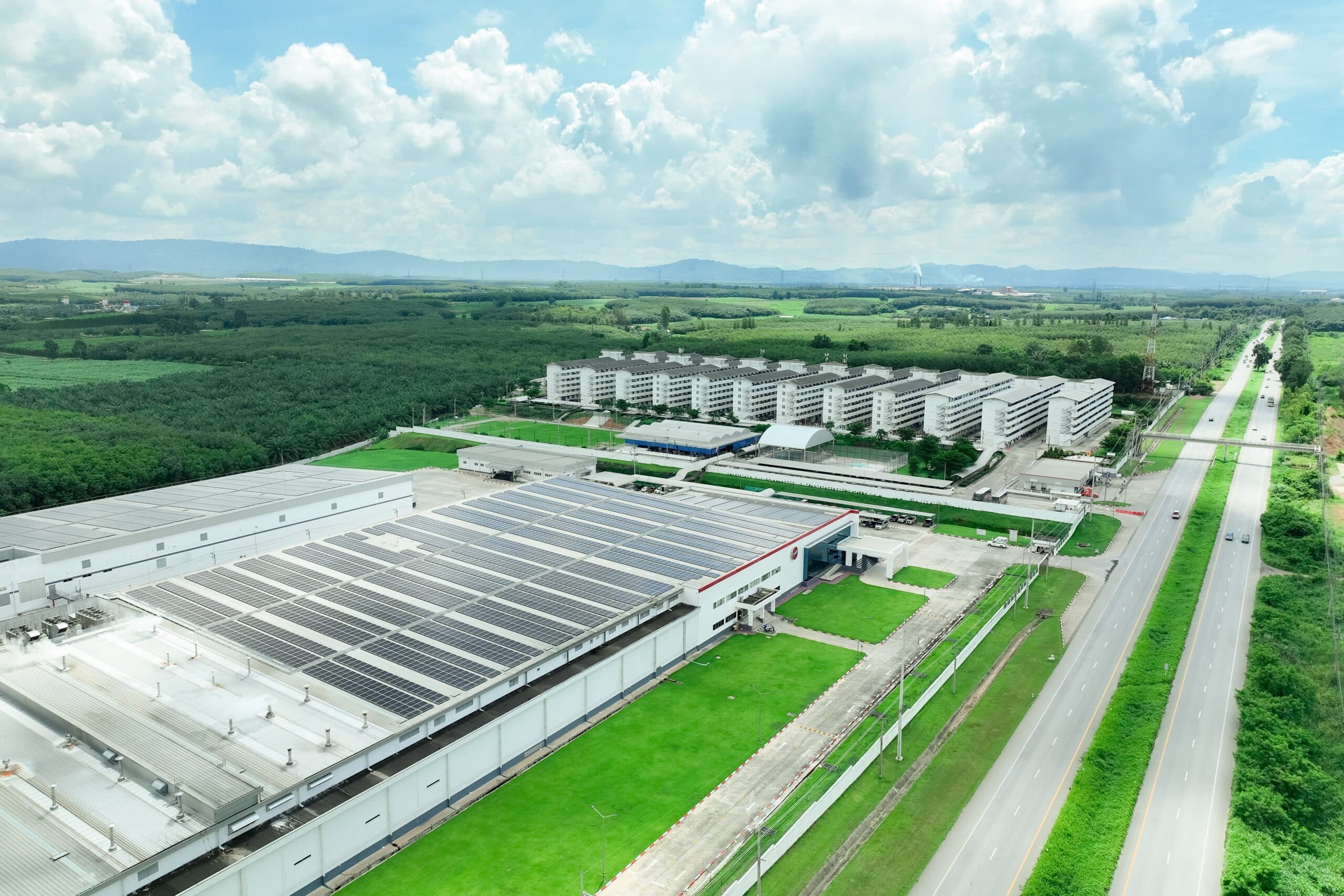In an era where sustainability and energy efficiency are paramount, home energy storage solutions have emerged as game-changers. Among the pioneering products in this domain, the Tesla Powerwall has gained significant attention.
But is it the best choice for your needs, or are there viable Tesla Powerwall alternatives? In this article, we’ll explore the Powerwall and compare it to other prominent home energy storage solutions.
What Is The Tesla Powerwall?
Tesla, renowned for its electric vehicles, extended its innovative prowess to home energy with the Powerwall.
This lithium-ion battery offers various models, providing storage capacities ranging from 7 kWh to 13.5 kWh. Currently, you will find the Tesla Powerwall 2 and Tesla Powerwall Plus available on the market.
It can store excess energy generated by solar panels or from the grid during low-demand periods and release it when needed, reducing dependence on the grid and lowering electricity bills.
With a sleek design and seamless integration with Tesla’s ecosystem, it’s a popular choice, albeit with a somewhat premium price tag.
What Is The Energy Storage Capacity Of The Tesla Powerwall?
The original Powerwall had an energy storage capacity of 7 kWh, however, this model has now been retired and replaced with the Tesla Powerwall 2 (now simply referred to as the ‘Tesla Powerwall’).
The Powerwall 2, and its newest companion the Tesla Powerwall Plus boast a bigger 13.5 kWh of usable storage capacity. However, multiple models can be installed together to aggregate for a total capacity of 135 kWh.
Tesla Powerwall vs. Tesla Powerwall Plus
The difference between the Powerwall and Powerwall Plus is relatively minimal. The Tesla Powerwall functions as a standalone battery system, compatible with or without solar panels.
On the other hand, the Powerwall Plus is essentially a standard Tesla Powerwall battery integrated with a Tesla Solar Inverter, tailored explicitly for solar setups. The regular Powerwall model, meanwhile, offers versatility, suitable for use with or without solar panels.
Both batteries have the same capacity of 13.5 kWh. However, the Powerwall Plus outshines its older counterpart with a significantly higher backup power output rating. This advantage makes it an excellent choice for those initiating new systems with intentions of transitioning partially or entirely off the grid.
How Energy Efficient Is The Tesla Powerwall 2?
All in all, the Tesla Powerwall 2 boasts a good level of performance for a lithium-ion battery. It exhibits:
- A round-trip efficiency of 90%, indicating that only around 10% of electricity is lost during its journey to the battery. This is the average you would expect for a battery of this type.
- The Powerwall’s depth of discharge (signifying the extent to which you can use the battery’s capacity at once without causing damage) surpasses the average, reaching 96%.
- A single Powerwall can deliver a maximum peak power output of 7 kilowatts while maintaining a consistent power output of 5 kW over an extended duration.
Overall, the Powerwall offers a good amount of energy efficiency. Whilst it doesn’t go above and beyond to offer excellent energy performance, it offers a solid performance that meets the average for most lithium-ion batteries on the market.
How Much Does Tesla’s Powerwall Cost?
To get a Powerwall in the UK, you can expect to pay:
- £9,390 (before installation)
- £10,290-£12,190 (with installation)
There are government grants available to help with these costs, such as the Smart Export Guarantee in the UK (which offers payment for excess electricity) and the Home Energy Loan if you’re based in Scotland.
How Does The Tesla Powerwall Perform in A Blackout?
The Tesla Powerwall is designed to provide backup power during a blackout or grid outage, making it a valuable addition to a solar power system or as a standalone energy storage solution.
When a grid outage is detected, the Powerwall is programmed to automatically disconnect from the grid and switch to provide power to your home or business. This switchover typically happens within milliseconds, ensuring a seamless transition to backup power.
The Powerwall can supply continuous power to critical appliances and circuits in your home, depending on your configuration and energy needs. This allows you to maintain essential functions like lighting, refrigeration, heating or cooling systems, and communication devices during the outage.
Once grid power is restored, the Powerwall will automatically begin recharging to prepare for the next potential outage. It can also be set to recharge during off-peak hours when electricity rates are lower, optimising cost savings.
How Many Tesla Powerwalls Do You Need?
The amount of Tesla Powerwall batteries you need for your solar system will come down to the size of your system, your property and your energy production demands.
In most cases, achieving complete off-grid living may necessitate multiple Tesla batteries (of either model). The good news is that both Powerwall and Powerwall Plus are interchangeable, allowing you to combine and install up to 10 of these batteries to meet your specific energy needs.
The Tesla Powerwall vs. Competitors
Due to its instantly recognisable brand, the Tesla Powerwall has become an increasingly popular choice for households worldwide. But, is it worth it? With many dynamic new technologies entering the market, it’s important to explore all of your options before committing to a new solar battery. Here’s how the Powerwall shapes up to some of its top competitors:
Tesla Powerwall vs. GivEnergy All In One
GivEnergy, a battery storage manufacturer based in the United Kingdom, is dedicated to enhancing the accessibility of solar energy and reducing electricity expenses for British homeowners.
Their substantial All In One solar battery represents a significant stride toward achieving this objective, offering impressive energy storage capabilities and efficiency.
This makes it a leading choice for individuals seeking to maximise their solar energy utilisation. Let’s take a look at it in comparison to the Tesla Powerwall:
| Key Specs | Tesla Powerwall | GivEnergy All In One |
| Capacity | 13.5 kWh | 13.5 kWh |
| Power Output | 10kW | 6kW |
| Round Trip Efficiency | 90% | 93% |
| Warranty | 10 Years | 12 Years |
| Price | £9,390 | £6,500 |
Like Tesla, you are also able to purchase multiple GivEnergy batteries to increase your overall capacity. Coming in at a much lower price point, this could be a more effective solution for those needing the capacity to serve a large space or property.
Overall, the GiveEnergy All in One battery offers a higher output at a lower cost than Tesla’s Powerwall. If you are looking for a more affordable alternative, the GivEnergy battery may be a good choice for your needs.
Tesla Powerwall vs LG Chem RESU 10H
The LG Chem RESU is another popular alternative to the Tesla batteries. The RESU is available in a range of different capacities, with the RESU 10h being LG’s highest-capacity battery.
The LG Corporation, formerly known as Lucky-Goldstar, is a South Korean brand that is known for its wide range of high-quality technology. They entered the solar market back in 2010 with a collection of panels. However, as of 2022 announced that it would cease production on panels and focus solely on other renewable technologies, such as batteries.
The LG Chem RESU collection has become popular for its affordability and reliability. With a large enough capacity for most homes and a comparatively low price point, these batteries are a best-seller worldwide.
| Key Specs | Tesla Powerwall | LG Chem RESU 10H |
| Capacity | 13.5 kWh | 9.8 kWh |
| Power Output | 10kW | 7kW |
| Round Trip Efficiency | 90% | 95% |
| Warranty | 10 Years | 10 Years |
| Price | £9,390 | £5,100 |
The Powerwall offers a higher capacity than LG’s battery. With the option to stack Tesla batteries – this could be a better option if you need an extremely high amount of battery storage and power.
However, the LG Chem RESU 10H offers enough capacity for most homes. And, with a fantastic round trip efficiency rating and low price point, offers a fantastic alternative for those who need a reliable battery that doesn’t cost the earth.
Tesla Powerwall vs. Puredrive PureStorage II 10kW
Puredrive, a UK-based firm, specialises in the conception, creation, manufacture, and dissemination of energy storage solutions to cater to a diverse clientele. They were founded in 2016, and offer a fresh perspective when it comes to solar technology.
For residential energy storage needs, the Puredrive PureStorage II 10kW AC Coupled Battery stands as the optimal selection. This battery incorporates LiFePO4 technology, ensuring heightened safety and performance. Moreover, its effortless connection to your home facilitates remote unit monitoring for user convenience.
| Key Specs | Tesla Powerwall | Puredrive PureStorage II |
| Capacity | 13.5 kWh | 10 kWh |
| Power Output | 10kW | 7kW |
| Round Trip Efficiency | 90% | 95% |
| Warranty | 10 Years | 10 Years |
| Price | £9,390 | £7,995 |
The Puredive PureStorage II is a relatively new battery with a lot to give. At a more affordable price point, this battery is a great choice for those who want high-quality performance without the cost.
Tesla Powerwall vs. Sonnen Eco 16
Sonnen, also known as Sonnen Group, is a German energy storage company specialising in residential and commercial battery systems. Founded in 2010 by Christoph Ostermann and Torsten Stiefenhofer, Sonnen is renowned for its innovative energy storage solutions and a focus on sustainable and clean energy.
The Sonnen Eco 16 boasts a generous capacity of 16.0 kWh and is known for its exceptional longevity, thanks to its lithium iron phosphate (LiFePO4) chemistry.
It excels in delivering reliable and efficient energy storage, often accompanied by a 10-year warranty. Sonnen’s unique flat-rate energy plans offer a novel approach to energy storage, making it an attractive choice for homeowners seeking both reliability and cost predictability.
| Key Specs | Tesla Powerwall | Sonnen Echo 16 |
| Capacity | 13.5 kWh | 16 kWh |
| Power Output | 10kW | 12kW |
| Round Trip Efficiency | 90% | 86% |
| Warranty | 10 Years | 10 Years |
| Price | £9,390 | £13,532 |
Overall, the Sonnen Echo 16 does provide a higher energy output than the Powerwall, however, it comes at a higher price point as well.
Whilst this may be worthwhile if you need a bigger capacity and don’t want to have to invest in multiple Powerwalls, the two batteries have pretty similar overall specs and both offer powerful solutions for those in need of solar storage solutions.
Tesla Powerwall vs. Enphase Encharge 10
Enphase Energy is an American company headquartered in Fremont, California, that specialises in solar energy and energy management technologies. Founded in 2006 by Raghu Belur and Martin Fornage, Enphase is known for its groundbreaking microinverter technology, which has significantly advanced the efficiency and reliability of solar power systems.
With a capacity of 10.1 kWh, the Enphase Encharge 10 is a top-tier AC-coupled battery. It operates at 240V and utilises lithium iron phosphate chemistry, ensuring both safety and high efficiency.
Designed with modularity in mind, users can easily expand their energy storage system over time. This battery is renowned for its reliability, making it a popular choice for those looking to harness solar energy effectively.
| Key Specs | Tesla Powerwall | Enphase Encharge 10 |
| Capacity | 13.5 kWh | 10.5 kWh |
| Power Output | 10kW | 10kW |
| Round Trip Efficiency | 90% | 96% |
| Warranty | 10 Years | 10 Years |
| Price | £9,390 | £7,000 (estimated) |
In conclusion, the Enphase Encharge 10 offers a great amount of power output and strong capacity. It also offers a stronger round trip efficiency of 96%, meaning you will experience less energy loss with this high-performance battery.
Tesla Powerwall vs. Pika Energy Harbor Flex
Pika Energy, Inc. is an American company that specialises in the development and manufacturing of advanced energy storage and power management systems. Founded in 2010 and based in Westbrook, Maine, Pika Energy is known for its innovative approach to energy solutions, particularly in the realm of residential and small-scale commercial applications.
Pika Energy has been recognised for its innovative technologies and has received awards for its contributions to the renewable energy industry. The company’s products are often used by homeowners, small businesses, and communities interested in harnessing renewable energy sources and improving energy resilience.
Pika Energy’s Harbor Flex 11.4 offers a substantial capacity of 11.4 kWh with a 48V DC-coupled setup. It employs lithium iron phosphate (LiFePO4) chemistry for safety and efficiency.
What sets it apart is its grid-supportive capabilities, allowing homeowners to participate in grid services and demand response programs, potentially generating additional value while ensuring reliable home energy storage.
| Key Specs | Tesla Powerwall | Pika Energy Harbor Flex |
| Capacity | 13.5 kWh | 13.5 kWh |
| Power Output | 10kW | 11.4 kW |
| Round Trip Efficiency | 90% | 96.5% |
| Warranty | 10 Years | 10 Years |
| Price | £9,390 | £9,866+ |
Pika’s Energy Harbor Flex offers a fantastic power output and round trip efficiency, making it a great option for those in need of a powerful solar battery. However, it does come at a high cost, with prices starting at around £9,866, already over £400 more than Tesla.
Tesla Powerwall vs. Generac PWRcell 17
Enphase Energy is an American company headquartered in Fremont, California, that specialises in solar energy and energy management technologies. Founded in 2006 by Raghu Belur and Martin Fornage, Enphase is known for its groundbreaking microinverter technology, which has significantly advanced the efficiency and reliability of solar power systems.
The core product of Enphase Energy is the microinverter, a small device that is installed on each solar panel in a photovoltaic (PV) system. Unlike traditional string inverters, which connect multiple solar panels in a series, microinverters work on a panel-by-panel basis.
The Generac PWRcell 17 is a high-capacity DC-coupled battery with 17.1 kWh of energy storage. Powered by lithium iron phosphate (LiFePO4) technology, it provides backup power during outages and efficient energy management. Its modularity allows for system expansion as energy needs grow.
The PWRcell 17 is backed by Generac’s reputation for durable and dependable products, making it an appealing choice for homeowners seeking peace of mind and energy resilience.
| Key Specs | Tesla Powerwall | Generac PWRcell 17 |
| Capacity | 13.5 kWh | 17.1 kWh |
| Power Output | 10kW | 15 kWh |
| Round Trip Efficiency | 90% | 96.50% |
| Warranty | 10 Years | 10 Years |
| Price | £9,390 | £10,500+ (estimate) |
In conclusion, the Generac PWRcell 17 offers a strong power output and round trip efficiency when compared to the Powerwall. This does, however, result in a higher price point (estimated 10k+, however, you will need to contact Generac for a detailed quote).
So, How Does The Powerwall Shape Up Against Competitors?
The Tesla Powerwall, often regarded as a benchmark in the energy storage industry, faces stiff competition from various competitors, each offering unique features and benefits. When assessing how the Powerwall shapes up against strong Powerwall competitors, several key aspects come into play.
Capacity: The Powerwall 2 offers a substantial 13.5 kWh capacity, making it suitable for many residential applications. Competing products, such as the LG Chem RESU 16H with 16 kWh, provide slightly higher storage capacity options, appealing to consumers with larger energy demands. Likewise, the GivEnergy All in One has the same 13.5 kWh capacity, but a stronger power output.
Compatibility: Tesla’s Powerwall is seamlessly integrated with Tesla solar products and inverters. However, some competitors, like Enphase and Sonnen, offer flexible compatibility with a range of solar systems, providing more options for consumers seeking to incorporate energy storage into existing setups.
Price: Pricing can significantly influence consumer choices. While Tesla’s Powerwall is competitively priced, other options may come at a lower cost or offer unique financing plans. Sonnen, for instance, offers flat-rate energy plans, simplifying budgeting for homeowners.
Warranty: Many energy storage customers prioritise long-term reliability. Most competitors, including LG Chem and Generac, offer 10-year warranties, similar to Tesla’s Powerwall.
Advanced Features: Some competitors differentiate themselves with grid-supportive capabilities or special features. For instance, Pika Energy focuses on grid services, enabling users to participate in demand response programs, potentially earning income while supporting grid stability.
The Tesla Powerwall remains a strong contender with its brand recognition and seamless integration with Tesla’s solar products.
However, consumers should carefully evaluate their specific needs, budget, and compatibility requirements when comparing it to Tesla Powerwall competitors, as the energy storage market continues to evolve with innovative offerings and competitive options.
Is It Worth Purchasing A Powerwall Battery?
The decision to purchase a Tesla Powerwall or any energy storage system should be based on individual needs and circumstances. It can be a great fit for those seeking seamless integration with Tesla solar products, energy independence, and grid support. However, it may not be the best choice for those with budget constraints, different solar systems, or high-capacity requirements. Exploring multiple options, assessing compatibility, and consulting with solar professionals can help you determine whether the Tesla Powerwall is the right choice for your energy goals. Get in touch with Smartly today if you need help with solar battery storage solutions.



